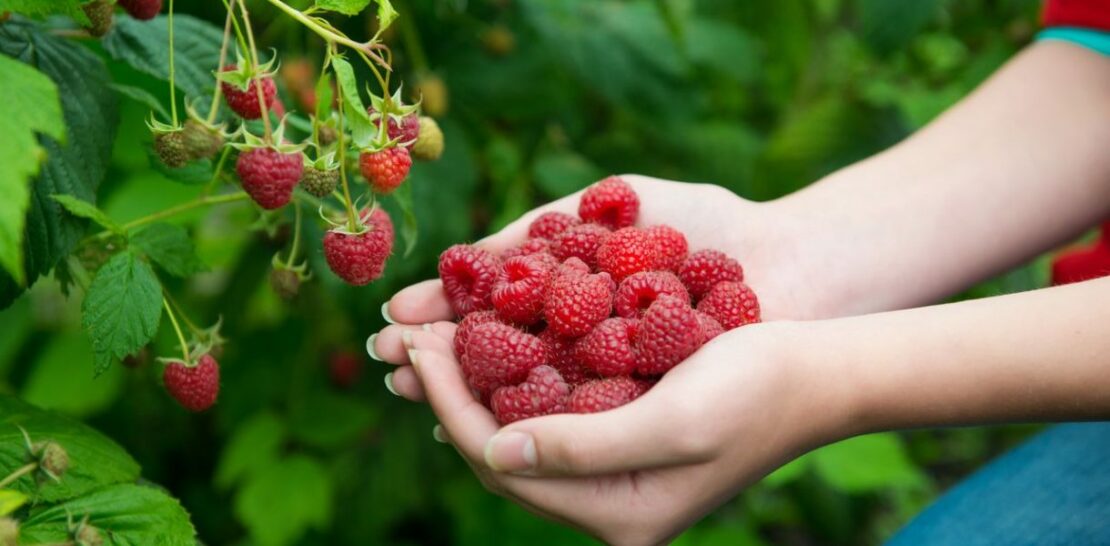As a gardener, you may be searching for the ideal plants to grow at the foot of your raspberry bushes to enhance their growth, health, and productivity.
This comprehensive article will provide you with a winning combination of companion plants, outlining their benefits and planting requirements, to guide you in creating a thriving and efficient garden.
Let’s dive into the world of companion planting and discover how it can transform your raspberry bushes into bountiful and beautiful garden features.
Understanding Companion Planting: Foundations for Raspberry Bush Success
Before delving into our recommended plants to grow at the foot of your raspberry bushes, it is essential to understand the concept of companion planting and why it is a valuable strategy for gardeners. Companion planting is an age-old practice that involves strategically growing different plant species in proximity to one another to foster beneficial relationships, such as attracting pollinators, deterring pests, and improving soil health. In this section, we will explore the key principles of companion planting and how it specifically benefits raspberry bushes.
- Attracting Pollinators: Many companion plants produce flowers that draw pollinators, such as bees, butterflies, and other insects, to the garden. This increased pollinator activity can lead to better raspberry fruit production, as the pollinators transfer pollen from one plant to another, enabling the plants to set fruit.
- Pest Deterrence: Certain plants release compounds that repel pests or attract the predators of these pests, acting as a natural form of pest control. This can be especially important for raspberry bushes, as they are vulnerable to various pests, such as aphids, raspberry beetles, and spider mites.
- Soil Health: Some companion plants have the ability to improve soil health by fixing nitrogen, breaking up compacted soil, or suppressing weeds. Healthy soil is crucial for the growth and productivity of raspberry bushes, as it provides the necessary nutrients and water for their survival.
Companion Plants for Attracting Pollinators: Boosting Raspberry Fruit Production
Now that we have established the principles of companion planting, let’s begin with our first category of recommended plants to grow at the foot of your raspberry bushes – those that attract pollinators. By planting these species, you will not only provide a beautiful visual display but also enhance the pollination process, leading to a more fruitful raspberry harvest.
- Borage (Borago officinalis): This annual herb produces striking blue, star-shaped flowers that are known to attract bees and other pollinators. Borage is easy to grow from seed and can be directly sown into the soil near your raspberry bushes in either spring or autumn.
- Yarrow (Achillea millefolium): Yarrow is a perennial plant with feathery leaves and clusters of small, white, or yellow flowers. It attracts a variety of pollinators and can be planted in either full sun or partial shade, making it a versatile companion for your raspberry bushes.
- Phacelia (Phacelia tanacetifolia): Also known as purple tansy, this annual plant is highly attractive to bees and other pollinators due to its nectar-rich, lavender-blue flowers. Phacelia can be sown directly into the soil around your raspberry bushes in the spring.
Deter Pests with these Companion Plants: Protecting Your Raspberry Bushes Naturally
The next category of companion plants we recommend for planting at the foot of your raspberry bushes are those that deter pests. These plants help to reduce the need for chemical pesticides, promoting a more natural and eco-friendly garden environment. They will also contribute to the overall health and longevity of your raspberry plants by keeping harmful pests at bay.
- Garlic (Allium sativum): Garlic is known for its strong smell, which can deter various pests, such as aphids, that may target your raspberry bushes. Plant garlic cloves in the fall, positioning them around the base of your raspberry plants, and they will grow into tall, fragrant plants by the following summer.
- Chives (Allium schoenoprasum): Like garlic, chives have a pungent aroma that can deter pests. Additionally, their purple, pom-pom-like flowers attract beneficial insects, such as ladybugs, whichprey on common raspberry pests. Chives can be planted from seed, transplants, or divisions, and they thrive in well-drained soil with full sun to partial shade.
- Marigolds (Tagetes spp.): These popular annual flowers release compounds called thiophenes, which can repel various pests, including nematodes and whiteflies. Marigolds can be easily grown from seed and should be planted in full sun near your raspberry bushes in the spring.
- Fennel (Foeniculum vulgare): This aromatic perennial herb not only deters pests like aphids but also attracts beneficial insects such as ladybugs and parasitic wasps. Fennel can be grown from seed and prefers well-drained soil and a sunny location.
Enhancing Soil Health with Companion Plants: Supporting Raspberry Bush Growth and Productivity
Our final category of recommended companion plants for your raspberry bushes focuses on improving soil health. By incorporating these plants into your garden, you can provide a nutrient-rich environment for your raspberry bushes to thrive, ultimately resulting in a more productive harvest.
- Legumes (Fabaceae family): Plants in the legume family, such as clover, peas, and beans, have a unique ability to fix atmospheric nitrogen through a symbiotic relationship with bacteria in their root nodules. This nitrogen-fixing process enriches the soil and benefits surrounding plants, including raspberry bushes. Legumes can be grown from seed and should be planted in well-draining soil and full sun to partial shade.
- Comfrey (Symphytum officinale): Comfrey is a perennial herb with large, hairy leaves and clusters of bell-shaped flowers. Its deep taproot breaks up compacted soil, allowing for better water and nutrient penetration. Additionally, comfrey leaves can be used as a natural mulch or compost material, providing essential nutrients to the soil. Comfrey can be propagated from root cuttings and prefers partial shade.
- Groundcover plants: Low-growing groundcover plants, such as creeping thyme (Thymus serpyllum) and sweet woodruff (Galium odoratum), serve as living mulch, suppressing weeds and helping to maintain soil moisture. These plants can be grown from seed, cuttings, or divisions and should be planted in well-draining soil with full sun to partial shade.
In conclusion, by incorporating the right combination of companion plants at the foot of your raspberry bushes, you can create a garden environment that maximizes the health, productivity, and beauty of your raspberry plants. Through careful selection of pollinator-attracting, pest-deterring, and soil-enhancing companion plants, you can enjoy the many benefits of companion planting and take your garden to new heights. With this knowledge and these recommendations in hand, you are now well-equipped to transform your garden space and reap the rewards of a bountiful raspberry harvest.




